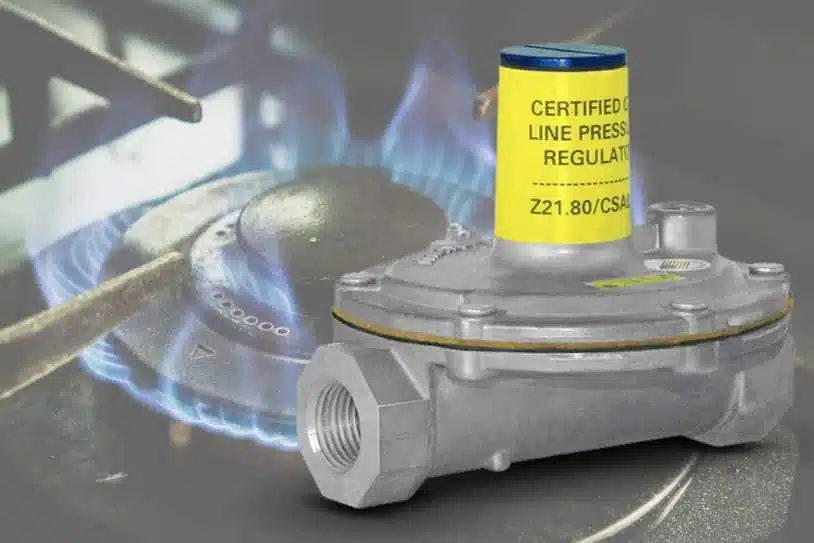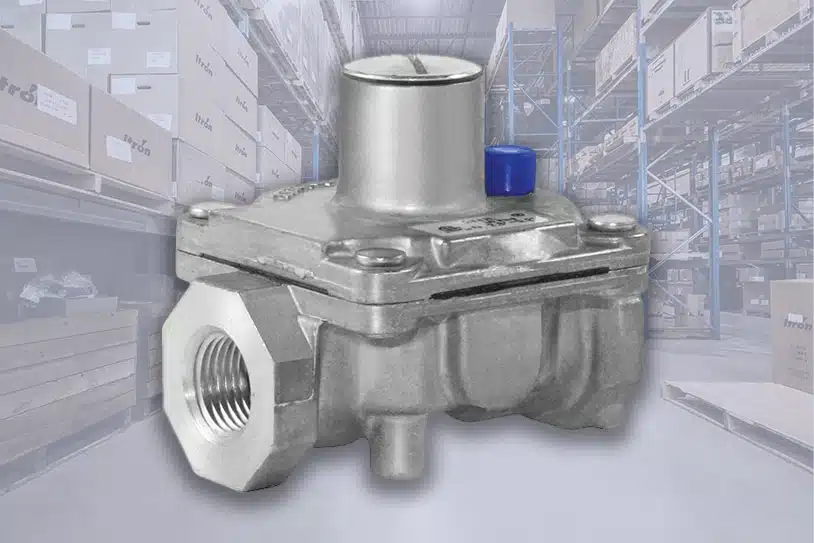Can a Gas Regulator Be Installed Vertically?

One common query that most people have about regulators is “Can a gas regulator be installed vertically?”. The answer to this is not a simple “yes” or “no”.
The gas regulator and the shut-off valve are the most critical components of any gas meter. Proper installation and venting in line with the local or federal venting requirements are essential aspects of setting up the gas meters for your upstream or downstream equipment or applications. Read on to learn more about gas regulator orientation in order to ensure efficient and compliant installation.
Gas Regulator Installation Tips
Whether you are working with an appliance regulator, line and service regulator, direct acting regulator, high pressure regulator, pilot operated regulator, or another type, knowing how your gas regulator works will go a long way in making the right decisions about installation. One of the other most important aspects of gas regulator installation is to refer to the manufacturer’s guidelines or manuals and follow their instructions. Pay attention to the number of pipe diameters, upstream and downstream that the gas pressure regulator requires, as well as the specific directions related to mounting.
- Depending on the angle modification required for the gas intake manifold, the regulator position can be either horizontal or vertical, but never upside down. Preferably, place the regulator on the intake manifold and the gas shut off valve on the gas supply pipe.
- While most regulators allow for multi-position mounting, for vented regulators you may have to choose a vertical installation.
- When using a vent limiting device, the mounting necessarily needs to be in a horizontal upright position.
- Propane gas regulators need to point downwards, covered and protected, or they need an attached adapter that places the vent opening in a downward direction.
No matter which type of gas regulator you use, it is usually advisable to install a pressure gauge locally at the outlet and inlet of the regulator, along with gauge petcocks to manually isolate each gauge. These gauges monitor the performance and fieldset the regulator.
Ensure Safe and Effective Venting
An extremely critical part of the installation of a gas regulator is venting. Venting basically allows the diaphragm within the regulator to breathe. If the diaphragm ever breaks down or ruptures, the vent provides the gas a leak path to the atmosphere and acts as a safety measure for your gas metered applications.
Therefore, it is important to keep the regulator vent free of any water, insects, snow, debris, or other foreign materials that could cause blockage. When installing a new gas regulator, consider the following:
- Avoid the long runs – While plumbing for vent lines, avoid the long runs and do not install excessive fittings. At the same time, do not try to reduce the recommended vent pipe size from the regulator.
- Consider inclement weather – Take additional precautions during inclement weather. Turning the vent outlet down and above the likely snow or water lines will help in preventing potential accidents.
- Keep bugs away – Install a bug screen on the vent outlet. This will keep out the insects and insect nests that could potentially block the vent.
- Take snow accumulation into consideration – In case your application’s venting runs to the top of the building, ensure that the line clears the potential snow accumulation level on top of the roof.
- Stay away from fresh air sources – Plan your vent lines in such a way that the discharges are not very close to any fresh air intakes or windows.
- Protect your equipment from water damages – At locations, where the regulators are submerged or prone to flooding, consider installing a special anti-flood type breather vent fitting. This will add a layer of protection for the regulator, slow down the wear and tear, and prevent corrosion.
Hire a Professional for Installing Gas Regulators for Your Applications
A qualified gas professional should always perform a gas regulator installation, operation, and maintenance. In most cases, a gas regulator can be mounted vertically as long as the gas flows from the direction of the inlet to the outlet (as marked by the arrow on the body). However, expert technicians will go one step further to ensure accurate positioning of the regulator so that the pilot bonnet vent remains unobstructed at all times. This will also prevent any contamination, debris, or rain from entering the bonnet.
Following installation, the technicians will conduct periodic inspections to monitor the regulator performance, and promptly identify any damage or wear and tear. This is especially critical in case overpressure has been an issue with the application.
Contact Norgas for Expert Advice
If you are looking for a natural gas regulator that can be installed vertically for a specific application, Norgas’ qualified technicians can help you. We offer expert advice on gas regulator installation, selection, regulator sizing, design, and maintenance. We are also experts in the distribution of gas valves and gas meters for a variety of sectors, including the HVAC, industrial, propane, and combustion markets.
Get in touch with us at 888-GAS-REGS (888-427-7347) for all your regulation and measurement requirements. We stock a wide array of high-quality supplies with off-the-shelf availability throughout Canada.





